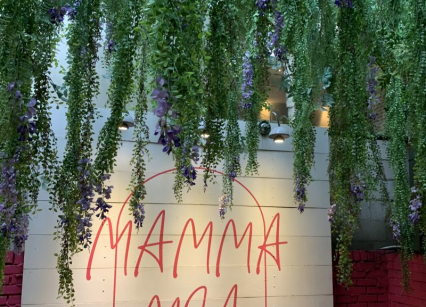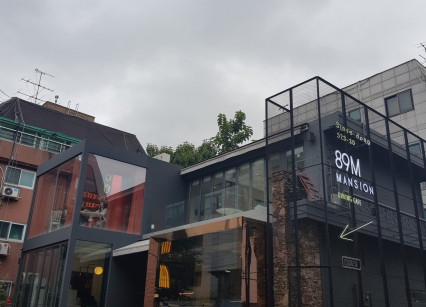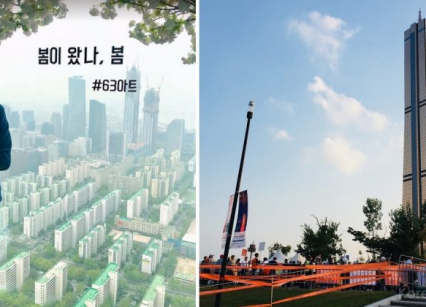Today I will be sharing: Gyeongbokgung Palace
Must visit palace – Gyeongbokgung

Seoul is a very modern city with its skyscrapers and hustle-bustle streets. But you will never think that there are some famous palaces which serves as an example of traditional Korean culture. So if want to feel Korean culture then you should visit one of these palaces in Seoul. Before starting our today’s target palace, let me share you some information about these popular 5 palaces, or we can call them as “Five Grand Palaces of Seoul”, so that you can choose any of them to visit.
Changdeokgung & Changgyeonggung
Let’s start from Changdeokgung Palace as I will give all information about Gyeongbokgung a little bit later. Changdeokgung Palace was first built in 1405 and the second of the five grand palaces of Seoul. This Palace is a UNESCO World Heritage site and its “Secret Garden” makes a picturesque background to your photos. Changgyonggung Palace is right next to Changdeokgung Palace and so it means you can walk between the two through a side gate for free. Changgyonggung is famous for its large grounds with beautiful landscaped gardens, especially when there are cherry blossoms.
Check out: Changdeokgung and Changgyeonggung palace
Deoksugung & Gyeonghuigung Palaces
They are also located near to each other, but these two palaces are much smaller than the above two. Deoksugong Palace is also the five Grand Palaces of Seoul, located near City Hall subway station. You can have the aerial view of Deoksugung from a Jeongdong Observatory nearby. Gyeonghuigung Palace is the youngest and today is entirely modern, so this site has the least historical authenticity of the five. But this palace is still attractive as they have Seoul Museum of History and Heunghwamun Gate.
Check out: Visit to Deoksugung Palace
Everything about Gyeongbokgung Palace
Gyeongbokgung Palace is the first palace of the Joseon Dynasty.
It is located leaning against Mt. Bukak to the north, and a wide Yukjo Street (now Sejong-ro) is opened in front of Gwanghwamun, the main gate, and was also the center of the city’s plan for the capital city of Hanyang (Seoul).
It was founded by King Taejo (Yi Seong-gye) in 1395. It was burnt down by the Japanese Invasion of Korea in 1592. It was reconstructed in 1867 during King Gojong’s reign. The reconstructed Gyeongbokgung Palace, led by Heungseon Daewongun, was a magnificent view of more than 500 buildings. With its name meaning “Greatly Blessed by Heaven, Gyeongbokgung is called the Northern Palace as it lies west of Changdeokgung and east of Gyeonghuigung. Gyeongbokgung Palace is still remains the most beautiful and the largest of all five palaces.

As you can see from the picture, the royal guards are always standing in front of the building which gives an opportunity to visitors to experience a rare Korean cultural scene from the past. If you watched old Korean dramas, you can understand me and when you are visiting this palace believe me you will feel like you are stepping into an old Korean dramas.
After arriving to the destination, your first impression will start from the main gate which is called Gwanghwamun. Actaully you can start taking very beautiful shoots right from this gate. Also usually, there will be so many tourists, so don’t worry if you are traveling alone, you can definitely find someone to take pictures for you.


Gyeonghoeru Pavilion, a pavilion located on a pond to the west of the living quarters, was built as a venue for feasts for foreign envoys and for the king and his court officials. Some interesting fact is that from Joseon Dynasty, Gyeonghoeru Pavilion and Hyangwonjeong Pond have remained relatively intact.

Things to do
I think everyone knows about Hanbok. It’s Korean traditional clothes and you can rent this pretty hanbok to take photos at different spots. You can find rental places near the palace. Hanbok, usually, costs from 10,000 won to 15,000 won which includes free accessories and bags in it. In addition, if you book a hanbok, you will get free entry to the palace, otherwise there will be admission fees.
Admission Fees
- Adults (ages 19-64): 3,000 won / Groups: 2,400 won
- Children (ages 7-18): 1,500 won / Groups: 1,200 won

Admission fee is free for
- Children (6 and under)
- Senior citizens (65 and above)
- Anyone wearing a hanbok
- Every last Wednesday of the month
- And the palaces are free on some holidays
Of course, then you take a tour wearing beautiful hanbok. Walking through the different building will be so interesting especially if you are interested in Korean history. Also, if you have trouble with reading Korean alphabet (Hangul) or just want some experts to explain, then it’s also possible to book tours as your ticket has free tours.
Operating Hours
- Janunary-February 09:00-17:00 (last admission 16:00)
- March-May 09:00-18:00 (last admission 17:00)
- June-August 09:00-18:30 (last admission 17:30)
- September-October 09:00-18:00 (last admission 17:00)
- November-December 09:00-17:00 (last admission 14:00)
How to get there
You can easily take Gyeongbokgung (경복궁역) or Gwanghwamun (광화문역) subway stations. Please don’t forget that they open every day, except Tuesdays.
Lastly, here is the homepage, so you can check if you need another information: www.royalpalace.go.kr (Korean, English)
I hope you will enjoy your trip experiencing Korean traditional atmosphere at such a historical places.







